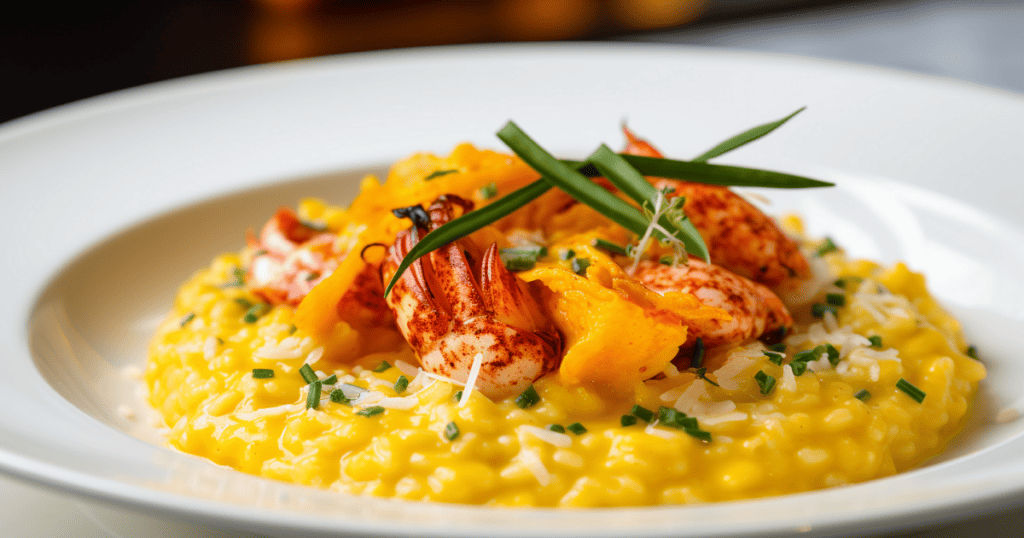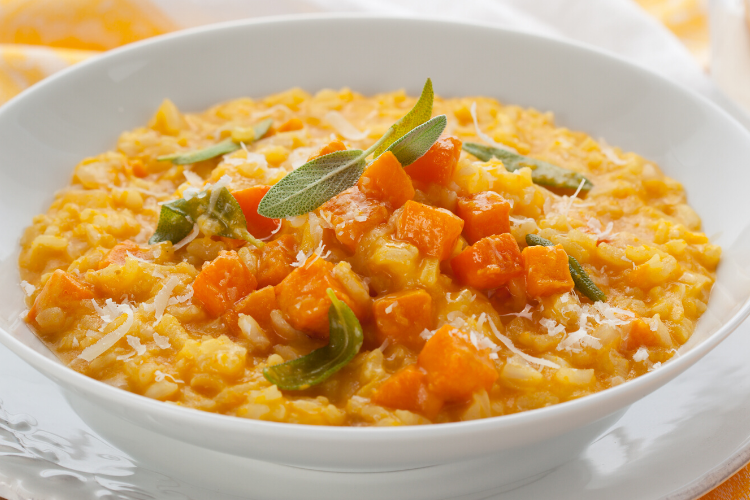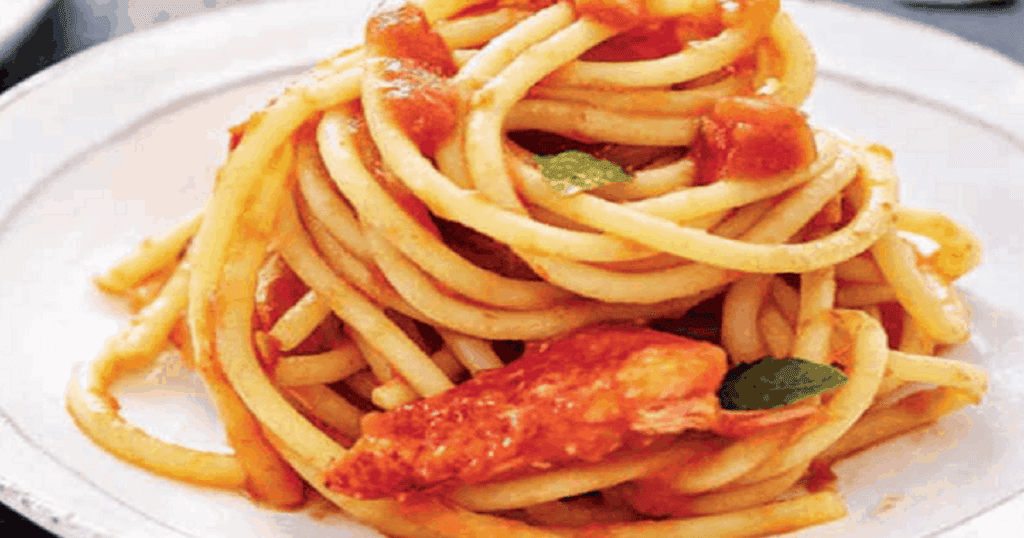Select a heavy bottom pan to craft the perfect lobster butternut squash risotto; its ability to retain heat is crucial. Set your stove to medium-high to warm the pan sufficiently. It’s essential to start by creating a toasty base for the Risotto, which brings us to another pivotal step: the slight coating of olive oil. This step is paramount, as it sets the stage for the rice to be toasted evenly.
Once your pan is heated, add Arborio rice in an even layer to toast. This process is not merely for flavor; it also awakens the natural starches in the rice, which are instrumental in achieving that coveted creamy texture all chefs strive for. Keep an attentive eye and nose as the toasting rice will emit a distinctly appetizing aroma.
Elevate your pasta game: Dive into Gordon Ramsay’s Guide to Exquisite Lobster Spaghetti for a luxurious twist.
Seafood at its best: Learn the art of seafood with Gordon Ramsay’s Pan Seared Scallops: The Ultimate Guide.
What Ingredients Comprise Lobster Risotto?
Lobster risotto is a luxurious Italian dish that typically includes the following ingredients:
- Lobster: Fresh lobster is the dish’s star, providing a sweet and succulent flavor.
- Arborio rice: A starchy, short-grain rice traditionally used to make Risotto due to its ability to absorb liquids and flavors.
- Stock: A seafood or fish stock is usually used to complement the lobster, but chicken or vegetable stock can also be used.
- White wine: A dry white wine is often added for depth of flavor.
- Onions or shallots: These are sautéed at the beginning to form a flavor base.
- Garlic: Adds aroma and depth.
- Butter and olive oil: Used for sautéing and to add richness to the dish.
- Parmesan cheese: Grated Parmesan is stirred at the end to add a creamy texture and savory taste.
- Herbs and seasonings: Fresh herbs like parsley or chives, salt and pepper are used to season the dish.
How Do Restaurants Achieve Creaminess in Risotto?
Restaurants make Risotto creamy by:
- Choosing the right rice: Arborio rice, with its high starch content, naturally becomes creamy as it cooks.
- Stirring frequently: Constant stirring encourages the rice grains to release their starch, creating a creamier texture.
- Using hot stock: Adding hot stock gradually allows the rice to cook evenly and release starch without becoming mushy.
- Finishing with fats: Stirring in butter and cheese at the end of cooking adds richness and enhances creaminess.
What Is the Key to Preparing an Excellent Risotto?
The secret to a great risotto lies in the following: Never wash your rice before cooking it, as doing so removes the starch that helps give Risotto its smooth texture.
- Toasting the rice: Toasting the rice in fat before adding the liquid enhances its nutty flavor and helps maintain texture.
- Patience and attention: Risotto requires constant attention and slow addition of stock, allowing the rice to absorb the liquid and develop a creamy consistency.
- Quality ingredients: High-quality stock, fresh herbs, and real Parmesan cheese can significantly affect flavor.
- Proper seasoning: Balancing the flavors with the right amount of seasoning is crucial to highlight all the ingredients.
- Serving immediately: Risotto should be served right after cooking to enjoy its creamy texture at its best.
Summing Up
As we reach the end of this culinary escapade, it’s clear that Ramsay’s Butternut Squash Lobster Risotto isn’t just a recipe. It’s a journey into the heart of abundant home cooking. You can transform your kitchen into a Michelin-starred haven by marrying the right techniques with quality ingredients.
So, embrace the challenge, stir patiently, and proudly present your plate. Whether it’s a special occasion or a desire to indulge in the finer tastes of life, this Risotto promises to deliver a luxurious dining experience that will linger on your palate and in your memory. Bon appétit!
Experience culinary elegance: Let your taste buds revel in Gordon Ramsay’s Top 5 Risotto Dishes You Need to Try, a refined flavors and techniques showcase.
Last Updated on January 22, 2024 by John Siracusa




